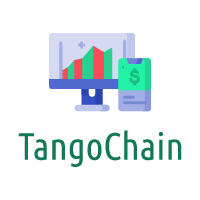In the ever-evolving world of finance, trading has become increasingly diverse, with various assets and currencies making their way into the market. Among these are commodity currencies, which derive their value from commodities such as oil, gold, and more. In this article, we will explore the concept of commodity currencies, their significance in the financial market, and strategies for trading them effectively.
Introduction to Commodity Currencies
What Are Commodity Currencies?
Commodity currencies, also known as “com-dolls” in the trading world, are a unique category of currencies that derive a significant portion of their value from the prices of commodities like oil, gold, and other natural resources. These currencies are often associated with countries that are major exporters of these commodities.
Commodity currencies play a pivotal role in the global financial landscape. They are not only a reflection of a nation’s economic health but also a direct link to the commodities that drive their economies. For instance, the Canadian Dollar (CAD) is inextricably tied to the fortunes of the Canadian oil industry, while the Australian Dollar (AUD) mirrors the performance of the gold market. Understanding the concept of commodity currencies is crucial for traders seeking to diversify their portfolios and capitalize on the fluctuations in commodity prices.
These currencies exhibit a unique characteristic that sets them apart from other major currencies like the US Dollar or Euro – a strong correlation with commodity prices. When commodity prices surge, the value of a commodity currency tends to strengthen as well. Conversely, when commodity prices plummet, the currency’s value may weaken. This correlation is a double-edged sword for traders, offering both opportunities and risks. Traders must navigate this intricate relationship with precision to profit in the world of commodity currency trading.
Why Are They Called “Commodity” Currencies?
Commodity currencies are called so because their exchange rates are closely linked to the prices of the underlying commodities. This close relationship stems from the fact that these countries heavily rely on the export of specific commodities to bolster their economies. As a result, fluctuations in commodity prices have a direct impact on their national revenues and, consequently, their currency’s strength.
For example, let’s take a closer look at the Australian Dollar (AUD). Australia is renowned for its significant gold production. Therefore, when the global demand for gold surges, the price of gold rises, and this, in turn, leads to an increase in Australia’s export earnings. As a result, the Australian economy thrives, leading to a stronger AUD. Conversely, if the price of gold falls due to market forces, the AUD’s value may depreciate. This interdependence between commodity prices and currency values defines the essence of commodity currencies.
In essence, commodity currencies serve as a barometer for the health of their respective commodity markets and their exporting nations’ economic stability. Traders keen on mastering the art of commodity currency trading must recognize this intricate web of relationships and develop strategies that capitalize on them effectively. Throughout this article, we will delve deeper into the specific aspects of various commodity currencies, their trading strategies, and the risks and rewards associated with this dynamic segment of the financial market.
Understanding Commodity-Backed Assets
Oil as a Commodity-Backed Currency
Oil, being one of the world’s most traded commodities, has a profound impact on currency values. Here are some key points to understand about oil as a commodity-backed currency:
- Direct Correlation: Oil prices and the currency of major oil-producing nations, such as the Canadian Dollar (CAD), often move in tandem. When oil prices rise, the CAD typically strengthens, making it an attractive choice for traders looking to profit from oil price increases.
- Volatility: Oil markets are known for their volatility. This volatility can result from geopolitical tensions, supply and demand imbalances, or unexpected disruptions in oil production. Traders must be prepared for rapid price swings when trading oil-backed currencies.
- Economic Impact: A significant portion of a country’s revenue in oil-producing nations is generated from oil exports. Therefore, fluctuations in oil prices can directly affect the nation’s economic health, subsequently influencing its currency’s value.
Gold as a Commodity-Backed Currency
Gold, often considered a safe-haven asset, has unique characteristics that tie it to certain currencies. Here are key points to consider about gold as a commodity-backed currency:
- Safe-Haven Status: Gold is sought after during times of economic uncertainty and crisis. As a result, currencies like the Australian Dollar (AUD) that have strong ties to gold prices can serve as safe-haven currencies during turbulent times in the global economy.
- Inverse Correlation with the USD: Gold often exhibits an inverse correlation with the US Dollar (USD). When the USD weakens, gold prices tend to rise, and vice versa. This relationship can influence the value of gold-backed currencies in comparison to the USD.
- Long-Term Trends: Gold is known for its long-term trends. Investors and traders often use gold-backed currencies as a hedge against inflation and currency devaluation over extended periods.
Other Commodity-Backed Assets
Commodity currencies can also be linked to various other commodities, each with its own unique characteristics. Here are some notable commodity-backed assets and their associations:
| Commodity | Associated Currencies |
| Copper | Chilean Peso (CLP) |
| Agricultural Products | Brazilian Real (BRL), Canadian Dollar (CAD) |
| Silver | Mexican Peso (MXN), Peruvian Nuevo Sol (PEN) |
Copper
Copper is a widely used industrial metal. Some currencies, like the Chilean Peso (CLP), are closely tied to copper prices due to their significant copper exports.
Agricultural Products
Certain currencies, such as the Brazilian Real (BRL) and the Canadian Dollar (CAD), can be influenced by the prices of agricultural products like soybeans, wheat, and coffee. Agricultural commodities are particularly relevant for countries with large agricultural sectors.
Silver
Silver, like gold, is considered a precious metal. While it may not have the same safe-haven status as gold, it can influence the value of currencies in countries with substantial silver production.
Understanding the connection between these commodities and their respective currencies is essential for traders looking to capitalize on the opportunities presented by commodity-backed assets. Each commodity brings its own set of factors and market dynamics that can impact currency values.
The Role of Commodity Currencies in the Forex Market
Correlation with Commodity Prices
The relationship between commodity currencies and the prices of underlying commodities creates a unique dynamic in the foreign exchange (Forex) market. Traders often analyze these correlations to make informed trading decisions. For example, if you anticipate a rise in oil prices, you might consider buying CAD pairs.
Impact of Geopolitical Events
Geopolitical events, such as conflicts in oil-producing regions or shifts in global trade dynamics, can have a profound impact on commodity currencies. Traders must stay attuned to these developments to navigate the Forex market successfully.
In conclusion, trading commodity currencies can be a rewarding but challenging endeavor. Understanding the correlation between these currencies and underlying commodities is essential, as is staying informed about economic and geopolitical developments. By adopting effective trading strategies and managing risks wisely, traders can harness the potential for profit offered by commodity currencies.
Frequently Asked Questions (FAQs)
What are the advantages of trading commodity currencies?
Trading commodity currencies can provide diversification, inflation hedging, and unique profit opportunities.
How do geopolitical events affect commodity currencies?
Geopolitical events in commodity-exporting nations can impact the value of commodity currencies due to their reliance on commodities.
Can beginners trade commodity currencies?
Yes, beginners can trade commodity currencies, but it’s crucial to start with a solid understanding of the market and a well-thought-out strategy.
What is the correlation between oil prices and oil-backed currencies?
Oil-backed currencies, like the Canadian Dollar, tend to strengthen when oil prices rise and weaken when they fall, reflecting a positive correlation.
How can I start trading commodity currencies?
To start trading commodity currencies, educate yourself about the markets, choose a reliable broker, and develop a trading plan tailored to your risk tolerance and goals.

